Case Study for Leading Lodging Company
Company Profile
Due to marketing restrictions, MRC Information Technology is unable at this time to reveal the
name of the company we are working with. Please excuse the generic reference to the customer
as a result. Thank you.
Business Problem
Leading lodging company (“LLC”) has been using a homegrown customer relationship and
document management tool for its reservation centers. The system tracks customer care
incidents for its limited service brands. LLC wants to build on its current CRM system to create a
single, unified user interface for all hotel related customer care issues. Full service properties are
maintained in Customer’s mainframe-based system.
The maintenance of two systems causes considerable amounts of additional costs and inefficient
use of time:
- Customer service agents need to be trained in both systems serving the same purpose.
- User interaction between the mainframe-based system and the Windows-based CRM
system requires many manual steps, for example, copy & pasted screens need lots of
manual clean up, and data lookups require frequent screen switching between
applications. Because data is copied manually, this can result in potential data loss and
miscommunication of issues. - Management can run reports based out of the same application rather than manually
extracting data out of CRM and mainframe-based system and creating Excel
spreadsheets combining the data. - Recurring service issues can be identified quicker as data is kept in one place.
- Fraudulent or very frequent complainers may be identified sooner as data is kept in one
place.
MRC IT Solution
MRC IT’s proposed solution extends the CRM to the full service chains so that all issues are
managed from within a single application. The primary benefits of consolidating all hotels into
MRC IT’s CRM system are as follows:
- Application Control:
Often mainframe-based applications can be costly and slow, if not impossible, to adapt to
Customer’s changing needs due to unavailable required offsite mainframe resources or
conflicting other overarching organizational needs. Maintaining control of the application
has allowed the Customer reservation center to effectively meet its changing needs over
time. - Disaster Recovery:
Application clustering will provide instant fail-over and data backup in case of a system
down issue or a catastrophic event. - Robust Design:
The accommodation of additional hotel chains into the current customer care application
allows for a streamlined, modern but most importantly new and robust design. - Reliable Support:
While the CRM development platform vendor does not publish the number of active
number of current CRM users, the number is estimated to be in the 40-75 million worldwide.
The current product version was released in summer 2008.

